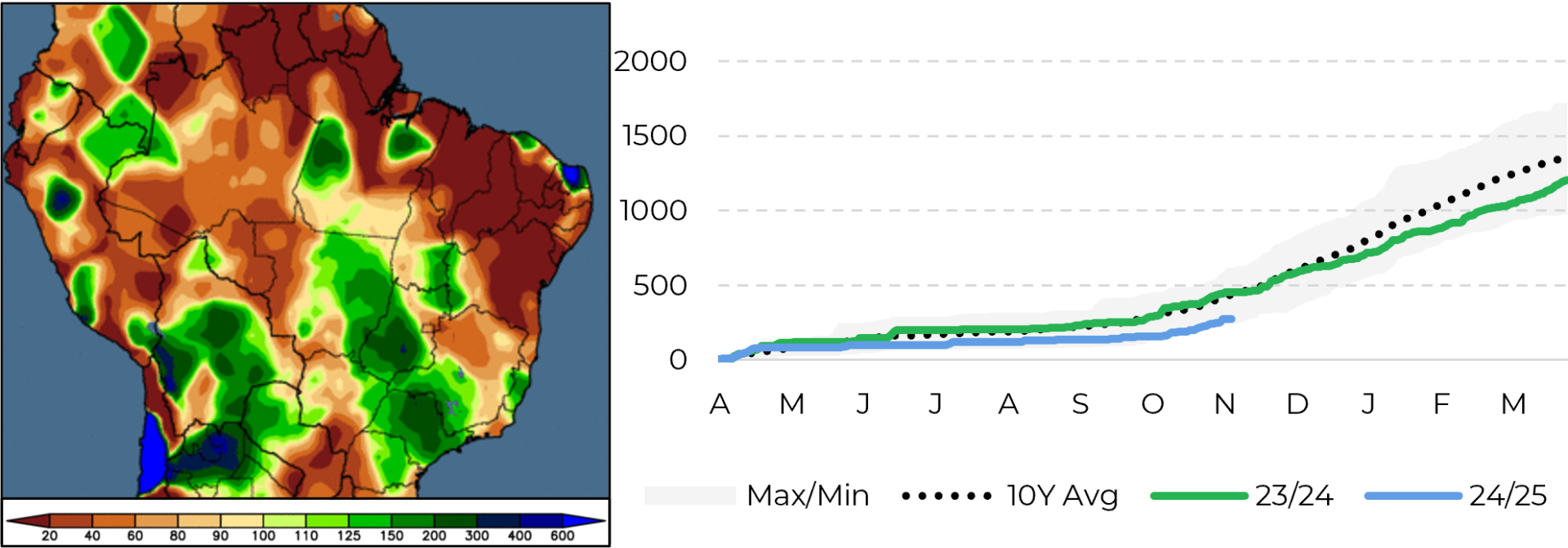
A week focused on macro and few changes in sugar
"Recent rainfall in Center-South Brazil could disrupt the current crushing but supports 2025/26 crop development, benefiting sugar's H/K spreads. Sugar prices were somewhat stable last week, though with some fluctuations, as the period was largely influenced by macroeconomic events."
A week focused on macro and few changes in sugar
- Recent rainfall in Center-South Brazil could disrupt the current crushing but supports 2025/26 crop development, benefiting sugar's H/K spreads.
- Despite macroeconomic volatility, sugar prices remained somewhat stable during last week, with short-term supply concerns and seasonal factors offering support.
- Trump’s election strengthened U.S. Treasury yields and the dollar, raising risk-aversion and potentially pressuring global commodity demand in the long term if an inflationary agenda is indeed pursued.
- The potential reintroduction of U.S. tariffs and China’s recession risks could reduce China’s demand for commodities, including sugar.
- The Fed cut rates by 0.25%, while Brazil’s Central Bank hiked by 0.50%, reflecting different economic priorities. The interest differential might benefit the BRL's strengthening, possibly supporting sugar prices – of course, depending on fundamentals.
- Nevertheless, while we wait to see how macro unravels, sugar fundamentals remained stable amid last week’s macro shifts.
The main focus in the sugar market has been the long-awaited arrival of rains in the Brazilian Center-South. While higher precipitation may shorten the current season by disrupting crushing, it could be beneficial for the development of the 25/26 crop. Consequently, recent rainfall is expected to support the H/K spreads. As a result, sugar prices were somewhat stable last week, though with some fluctuations, as the period was largely influenced by macroeconomic events.
Image 1: 14-days precipitation anomaly ending Nov 6 (mm | left) and estimated cummulative precipitation in cane areas in Center-South (mm | right).

Source: Agweather, Bloomberg, Hedgepoint
Image 2: Busy week on the macro front: BRL x DXY

Source: Refinitiv, Hedgepoint
Image 3: Macro week impact on key commodities (Nov 1st =100)

Source: Refinitiv, Hedgepoint
Image 4: Sugar global trade flows (‘000t tq)

Source: GreenPool, Hedgepoint
In Summary
Weekly Report — Sugar
livea.coda@hedgepointglobal.com
victor.arduin@hedgepointglobal.com

